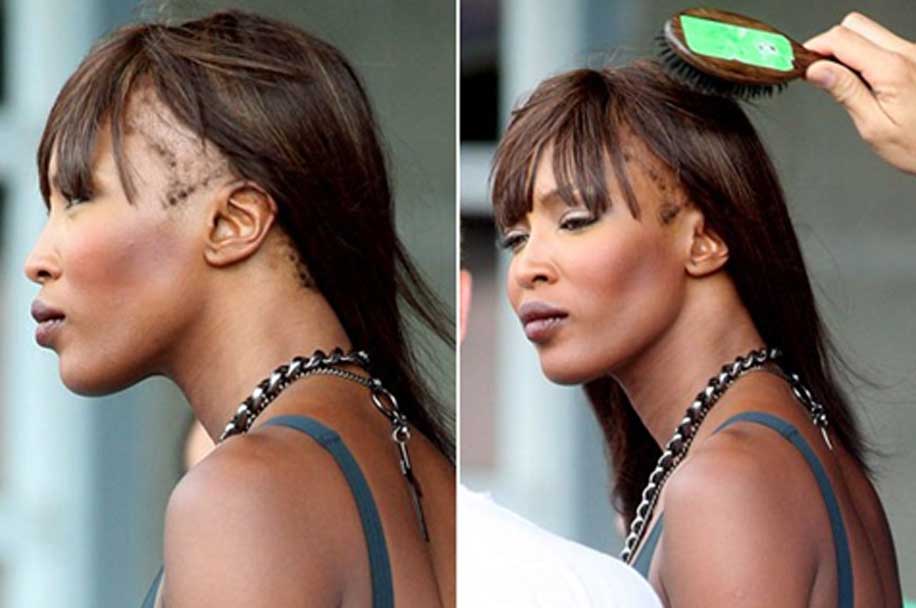Traction alopecia is hair loss caused by damage to the hair follicles from hairstyles that pull on the hair. This type of hair loss commonly occurs in women who wear cornrows, braids and hair extensions, but also affects those who pull their hair into tight buns and ponytails like gymnast and some dancers, and those who excessively or vigorously brush and/or backcomb their hair.
Traction alopecia from hair styling can be reversed; that is when you take a break from styling your hair too tightly and when you do, you have a pretty good chance of re-growing your hair. However, if your hair begins to grow back and you go back to your old ways, you will again weaken your hair follicles, damaging your hair further & preventing it from growing back permanently.
By properly taking care of your hair, you reduce the risk of developing traction alopecia. Although brushing helps eliminate tangles, avoid using brushes with metal prongs, as the prongs can harm your hair. Gently remove tangles from the ends upwards and avoid tugging at your hair. Boar-bristle brushes tenderly de-knot tangled strands, and finish the job by distributing natural oils from the scalp to each strand.
Hair ties and clips are handy styling aids, but it’s important to choose and use them with caution. When buying hair accessories, inspect the edges for sharpness, and avoid those with harsh ends that will pinch or snag hair. If you use hair accessories on a regular basis, make sure you remove them before you retire to your bed to give your hair a break from the constant traction.
When putting your hair up or going for one of those stylish buns, never use uncovered elastic bands or those with metal clasps, as they can put undue stress and tension on your hair shaft which can lead to breakage and hair loss. Additionally, avoid twisting the hair ties too tightly around your hair, and try not to pull your hair away from your forehead because this can damage the hair at the front and sides of your temples.
The safest way to prevent traction alopecia is to care for your hair just as you would any other part of your body. Protecting your hair from unnecessary damage is particularly essential, because it will help you ensure your hair maintains its strength and thickness in the long term.
If you are experiencing the devastating effects of hair loss and would like to learn more about the options that are available to you, please request a private, confidential consultation with a hair loss expert at Vivandi Trichology Center. Let us help find the right hair loss solution for you.




 No products in the cart.
No products in the cart.